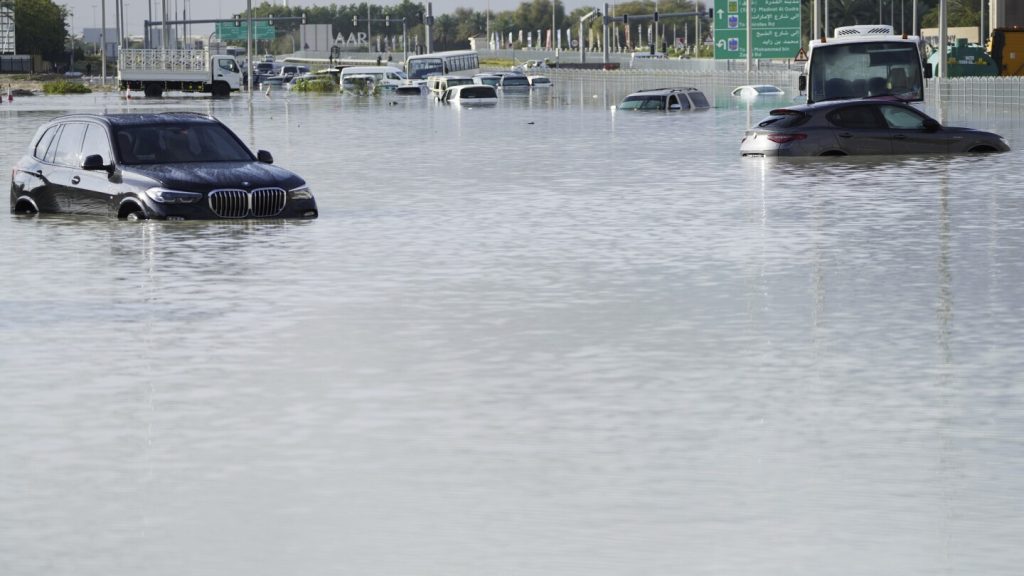Cloud seeding is a weather modification method that has been used for decades to increase rainfall by shooting particles into clouds to attract moisture that falls as snow and rain. It is a controversial practice in the weather community, with some meteorologists questioning its effectiveness in producing significant rainfall. Despite its limitations, governments in drought-prone regions like the U.S. West and the UAE continue to invest in cloud seeding technology in the hopes of generating more water. However, experts like atmospheric scientist Ryan Maue believe that cloud seeding alone cannot explain extreme weather events like the recent heavy rainfall in the UAE, which he attributes to natural atmospheric conditions.
Meteorologists and climate scientists argue that the recent deluge in the UAE is more likely a result of human-induced climate change rather than cloud seeding. Computer models predicted the heavy rainfall days in advance, showing that it was not caused by tinkering with clouds but rather by atmospheric disturbances related to climate change. Researchers like Michael Mann emphasize the need to focus on the broader issue of climate change, which is leading to heavier rainfall around the world due to a warmer atmosphere’s ability to hold more moisture. The use of cloud seeding as a scapegoat diverts attention from the urgent need to address the impacts of climate change on extreme weather events.
While cloud seeding can have a localized impact on precipitation, scientists are divided on its overall effectiveness in significantly increasing rainfall. A recent study on aerial seeding found a precipitation pattern on radar that aligned with the seeding, providing some evidence that the method may work. However, the scale of atmospheric forces is so massive and chaotic that cloud seeding alone is unlikely to explain the extreme rainfall in the UAE. Climate scientists caution against attributing such events solely to cloud seeding, as they may overlook the broader climate factors driving changes in precipitation patterns globally.
The Middle East, including the UAE, is no stranger to intense tropical storms that can bring massive amounts of rainfall in a short period. While cloud seeding may play a role in enhancing precipitation levels, these extreme weather events are mainly driven by natural atmospheric conditions. The UAE’s recent deluge is consistent with past events in the region, indicating a trend of more frequent and impactful storms due to a warming climate. Scientists emphasize the need to prioritize climate change mitigation and adaptation strategies to address the increasing frequency and intensity of extreme weather events, rather than relying on cloud seeding as a solution to water scarcity in arid regions.
Cloud seeding technology continues to be used in various countries to boost precipitation levels, despite uncertainties about its long-term effectiveness. Governments in drought-prone regions like the U.S. West and the Middle East invest in cloud seeding programs to augment water resources, with mixed results in terms of increased water supply. While cloud seeding may provide some benefits in water-stressed areas, its potential impact is limited compared to the broader climatic changes driving extreme weather events. Scientists emphasize the need for comprehensive solutions to address the challenges posed by climate change, rather than relying on localized weather modification techniques like cloud seeding.


